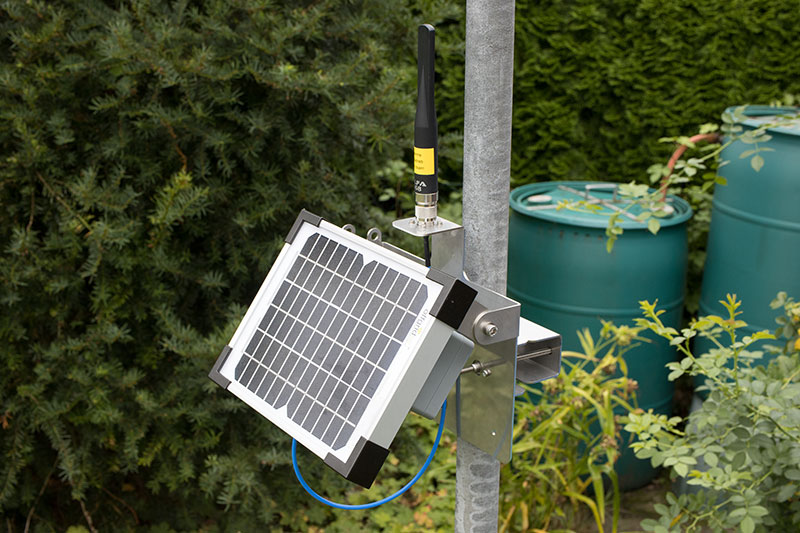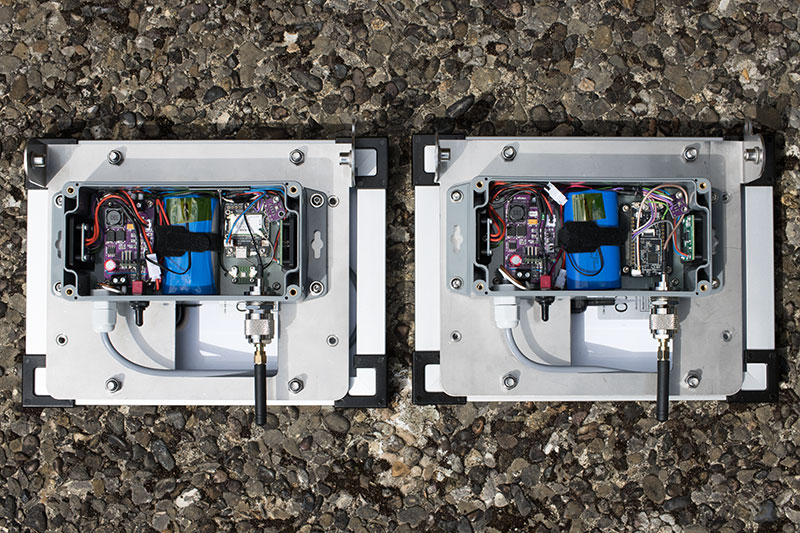Solar Mesh Station
Solar-powered base station for Meshtastic and other IoT devices
As part of our experiments on a local mesh network, we developed a solar-powered base station that allows the installation of a solar panel with charge controller, battery, and other electronics at any angle of inclination. The mechanics are made of stainless steel and can be used in all areas of IoT sensor technology and infrastructure. It can be mounted on a mast tube (vertically) or a balcony railing (horizontally). All the technology is housed in an IP65 water-protected enclosure on the rear. The project was realized in collaboration with Eike, who was responsible for the mechanical design.
The interior view shows the setup in the Gainta G368MF housing with MPPT solar charge controller, 1S2P lithium battery, and LoRa node. Either Heltec T114 or RAK4631/RAK19003 can be used here. On the underside there is an M12 cable gland, a water-protected toggle switch, a pressure compensation membrane and an N-type socket. An INA219 current sensor and the mesh node reset circuit are mounted on the side. A BMP280 sensor measures temperature and air pressure.
The front part of the bracket combines the 5W solar panel with the housing. An N-type socket including the antenna is mounted on the rear panel and is therefore independent of the set angle of inclination of the solar panel. It is connected to the antenna socket on the underside of the housing with a cable. (The image shows a temporary antenna, as operation without one can lead to destruction of the transmitter.)
The project is not yet complete; further documentation will follow soon.
Downloads
- CAD drawing and BOM for the mechanics
- Bill of materials for electronic components
- CAD drawing of the mounting plates
- Drilling template for the enclosures
- 3D print files for the holders of the current sensor and reset circuit, as well as blind plugs for the PV panel
- 3D printing file for the Heltec T114 node mounting plate (Thingiverse)
Note
All brands and product names are the property of their respective owners.
License
The project may be freely used and modified for non-commercial purposes, but credit must be given to the author (CC BY-NC-SA).


